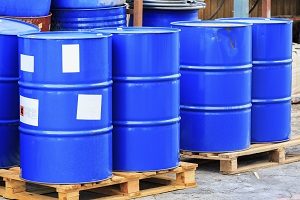
Are You Sure Sudden & Accidental Site Pollution Is Enough?
By Ivy Riggs, Executive Underwriter, PartnerOne Environmental
“You sold me the wrong policy!” is a terrible claim no producer ever wants to hear from their client…especially when it’s true. But being an expert in all product lines and understanding the nuances of each can be a challenge for even the most diligent of professionals. With highly specialized products like Site Pollution insurance, it can be even more daunting. This overview will briefly explore one of the more common questions fundamental to this product: what is the difference between Sudden & Accidental (S&A) Site Pollution coverage and a gradual or “broad” Site Pollution policy?
This example may help to illustrate some of the key distinctions. Imagine that a manufacturer has a lined pit on their property for the temporary collection of hazardous wastes prior to removal for treatment and disposal. An unusually severe weather event causes the pit to overflow, releasing contaminants onto the property and into a nearby stormwater system which carries the pollutants offsite. This type of event would be considered sudden and accidental under most Site Pollution policies, and even under most General Liability policies that include a small S&A give-back. The key considerations to evaluate when asking whether S&A coverage is “enough” include the anticipated likelihood, frequency, and severity of such events. These answers will help producers and their clients to determine appropriate limits and retentions to address these exposures.
But now consider a different scenario in which this same manufacturer has no idea that the lining in their waste pit was damaged during installation and has slowly been leaking into the subsurface for years. As a result, both soils and groundwater underlying the property are now contaminated, and even worse, that contamination has migrated offsite and impacted the drinking water wells used by nearby residential property owners. The manufacturer only becomes aware of the problem when they are sued by their neighbors. If this insured carries only S&A coverage, their claim is almost certain to be denied because—even though it was accidental—it was not sudden, having occurred over a lengthy time period. Moreover, because they now have a known loss, they are unlikely to be able to purchase a broad coverage Site Pollution policy to defend or indemnify them against this or similar claims until they have fully investigated and corrected the problem. Such efforts could cost them hundreds of thousands of dollars directly out of their bottom line. In this case, S&A coverage was clearly not “enough” and the insured may seek to recoup the loss from their agent’s E&O policy if that producer didn’t offer them broader coverage in the first place.
A great irony in this debate is that Site Pollution premiums have dropped so significantly in recent years that a very comprehensive policy covering both S&A and gradual pollution events has never been more affordable. In fact, when included on a package policy, S&A is often thrown in as a “freebie” while broad form coverage may be available for $3,000 or less on an annual basis.
So with cost no longer the most serious concern, the key issue to focus on is which type of loss is most likely to happen to your client. Are their pollution exposures mostly obvious and easily detected if there is a release? Examples might include a facility with only aboveground storage tanks or drums, a warehouse storing flammables or corrosives, and a marina with over-the-water refueling operations. For such properties, clients’ most probable risks of loss might be adequately addressed by S&A coverage with appropriate limits in place. The reality, however, is that the vast majority of properties feature unseen or unknown pollution pathways that won’t be correctly addressed by S&A protection alone. Examples include any location with underground storage tanks, fuel lines, septic systems, leach fields, oil-water separators, dry wells, cooling towers, HVAC systems, or other common features that may be vulnerable to inadequate maintenance or improper usage. Such facilities usually require broader coverage than can be provided by sudden and accidental pollution insurance.
With more than 40 carriers currently competing for your business in the pollution marketplace, the choices available may feel overwhelming. This feeling may be compounded by the fact that there remains neither a standard Site Pollution form among carriers nor even agreed-upon definitions of key coverage terms. Fortunately, much of this work of comparing competing forms has been completed for you. Reaching out to an insurance specialist in the field of environmental insurance can help both you and your client feel confident that the proper coverage has been purchased.
For more information on environmental insurance and the products we offer, feel free to call (800) 596-2156. You can also contact us for additional information on Sudden & Accidental vs. Gradual Pollution coverage.
Type: Blog
Topic: Sudden and Accidental